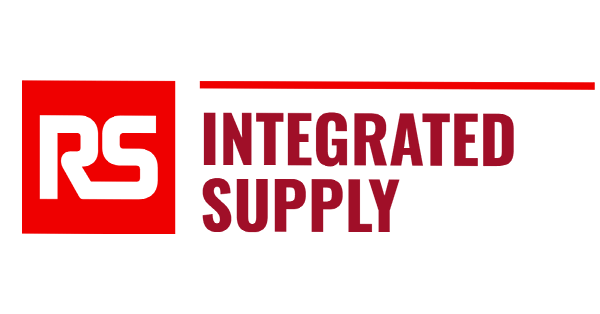How Centralized Procurement Saved MRO Costs for Pharma Manufacturers

Executive Summary
- Client problem: Inflated OEM pricing due to decentralized procurement.
- Approach taken: Centralized spend analysis and supplier collaboration.
- Solution implemented: Validated and approved aftermarket UV lamp.
- Quantifiable result: $91,000 savings, up to 69%-unit cost reduction.
A fragmented procurement process across multiple pharmaceutical manufacturing sites led to inflated costs for a specialized UV lamp. RS Integrated Supply conducted a centralized spend analysis, identified a high-usage item, and partnered with a trusted aftermarket supplier to validate a compliant alternative. The result: a cost-effective solution that saved $91,000 and reduced unit costs by up to 69%.
The Client
- Industry: Pharmaceutical manufacturing
- Client: Multiple multinational pharmaceutical manufacturers
- Equipment involved: UV lamps used in water quality analyzers
- Geographic region: North America
Four different pharmaceutical companies were involved, operating across multiple sites. RS Integrated Supply’s centralized procurement analyzed purchases around UV lamps used in water quality analyzers, a critical component in regulated production environments.
The Challenge
Key Issue identified:
- Independent purchasing across sites
- Inflated OEM pricing
- Lack of visibility and coordination
- Regulatory constraints on sourcing alternatives
Despite being a niche item, the lamp was treated as a non-stock item and frequently purchased at an inflated cost, often directly from the original equipment manufacturer (OEM). The issue wasn’t just with the cost of the lamp. It was the lack of visibility involved. Procurement team members representing the different sites were ordering independently, unaware that others within the same network were using the exact same part. Without centralized oversight, the opportunity to consolidate demand and negotiate better pricing was being missed entirely.
Adding to the complexity, the item was used in a regulated environment, meaning any proposed changes, especially switching providers from an OEM, required rigorous validation. Each client’s site had its own approval process, and any deviation from the original specification had to be justified with technical documentation and, in some cases, physical testing.
The sourcing team also had to navigate the challenge of identifying the true manufacturer behind the OEM-branded product. Without accurate data that included clear part number cross-references or manufacturer transparency, this required a combination of experience, research, and supplier engagement.
The Solution
The sourcing team took a structured approach to address the challenges:
- Step 1: Conducted a centralized spend analysis across multiple client sites.
- Step 2: Identified savings opportunity with a high-usage UV lamp across four clients.
- Step 3: Partnered with a trusted aftermarket supplier to validate a compliant alternative.
- Step 4: Negotiated volume-based pricing and stocking agreements.
- Step 5: Compiled technical documentation and conducted site testing.
- Step 6: Secured stakeholder approvals and updated procurement systems.
The breakthrough came when a sourcing manager began analyzing annual spend data across several sites from different clients. By aggregating purchasing activity for UV lamps, a pattern emerged: a single lamp type was being purchased in significant volume across four different clients.
The sourcing team worked with internal stakeholders to ensure that the new item was properly cataloged, with automated prompts in the procurement system to guide future purchases toward the approved alternative.
This is a strong example of RS Integrated Supply’s Strategic Sourcing services, part of an integrated supply program. Where OEM commercialization and vendor consolidation are achieved through the expertise of the procurement team.
Implementation
- Aggregated purchasing data across clients.
- Identified high-volume SKU for consolidation.
- Engaged supplier for technical validation and compliance documentation.
- Conducted successful trials at two client sites.
- Implemented catalog updates and procurement prompts.
- Established just-in-time delivery with no prepayment required.
The procurement team reached out to a trusted aftermarket supplier known for producing high-quality equivalents to OEM UV lamps. To ensure compliance, the team compiled technical documentation comparing the OEM lamp with the proposed alternative. This included spec sheets, performance data, and a side-by-side analysis of key attributes such as wavelength, lifespan, and compatibility with existing equipment.
After confirming that the supplier could provide a functionally identical product, the team negotiated a volume-based pricing agreement. The supplier agreed to stock the lamps in advance, enabling just-in-time delivery without requiring prepayment or excess inventory on the client’s side.
Samples were shared with two clients for testing, both of which approved the new lamp after successful trials.
result
| Outcome | Metrics |
|---|---|
| Total Savings | $91,000 |
| Unit Cost Reduction | Up to 69% |
| Lead Time Improvement | Achieved via supplier stocking |
| Stockout Frequency | Reduced through JIT delivery |
| Compliance | Maintained through validation |
Final Takeaway
This success story demonstrates how centralized data analysis and supplier collaboration can unlock significant savings, even in regulated environments. By identifying common needs and consolidating demand, RS Integrated Supply delivered results that individual sites could not achieve alone.

